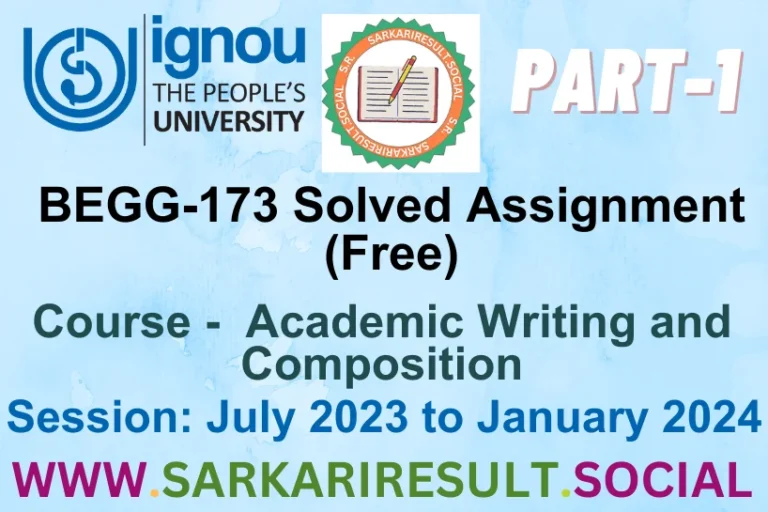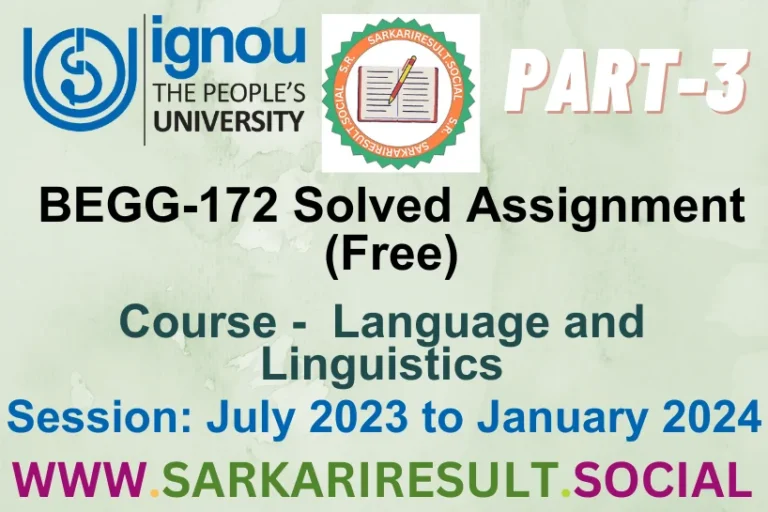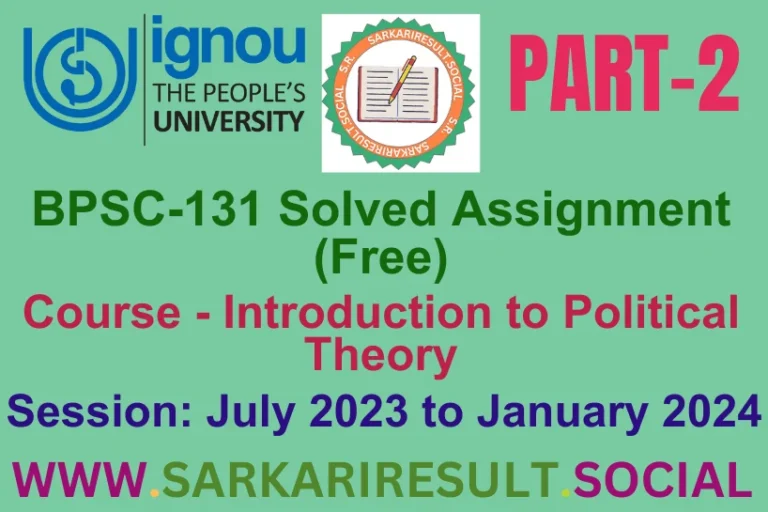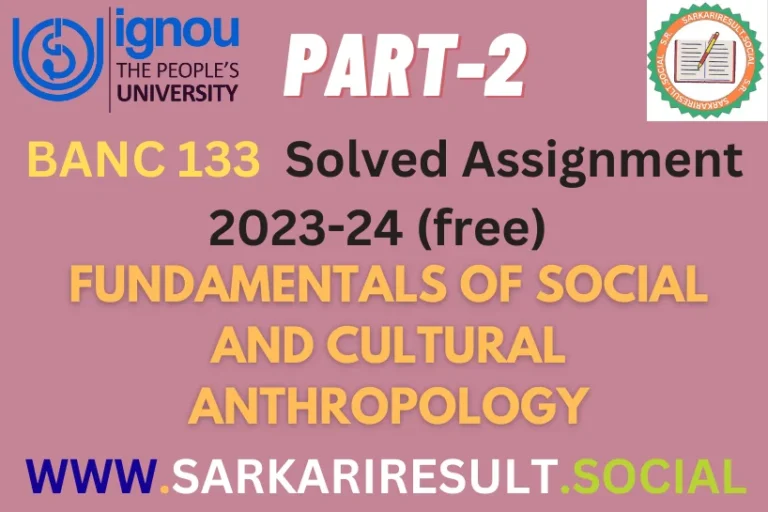BHIC 132 IGNOU Solved Assignment 2023-24 (free) Part -2
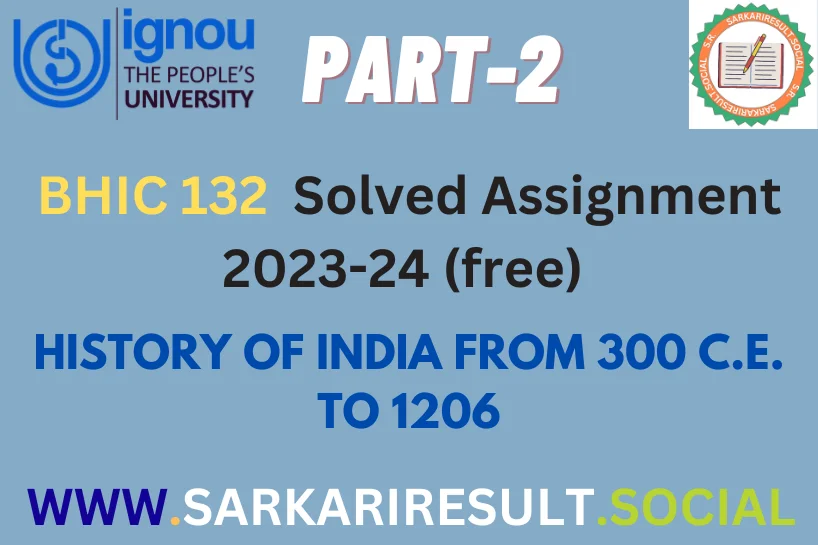
BHIC 132 IGNOU Solved Assignment 2023-24 (free) Part -2
Refine your historical acumen with BHIC 132 IGNOU Solved Assignment 2023-24 (free) Part -2, presenting three insightful questions, each to be answered within a 250-word limit. Our formal, scholarly solutions delve into historical nuances while meeting specified criteria. Elevate your comprehension, adhere to word limits, and excel in your historical studies. Access BHIC-132 IGNOU Assignment 2 solutions to bolster your academic journey!

3) Write an essay on the social structure of post-Gupta period.
Ans. The post-Gupta period in India, spanning from the 6th to the 12th century CE, witnessed significant changes in social structure and dynamics following the decline of the Gupta Empire. This era was marked by diverse political fragmentation, regional kingdoms, and the emergence of new social hierarchies.
Also Read This: BHIC 132 IGNOU Solved Assignment 2023-24 (free) Part -1
Social Structure:
1. Feudal System: The society was characterized by a feudal setup where local rulers, landlords, and chiefs held significant power and controlled smaller territories. They exercised authority over land and resources, contributing to a decentralized political structure.
2. Caste System: The caste system continued to play a pivotal role, defining social hierarchies and professions. Brahmins, Kshatriyas, Vaishyas, and Shudras maintained their positions, though social mobility existed to some extent, allowing individuals to change caste through education, wealth, or occupation.
Also Read This: BHIC 131 IGNOU Solved Assignment 2023-24 (free) Part -1
3. Emergence of Regional Dynasties: Various regional dynasties, such as the Pallavas, Chalukyas, Rashtrakutas, and Cholas, held sway over different parts of the Indian subcontinent. These ruling families established their social orders, with the king and nobility at the top of the hierarchy.
4. Role of Artisans and Traders: Urbanization and trade led to the rise of artisanal and mercantile classes. Cities flourished as centers of commerce, and skilled artisans and traders gained prominence, contributing to economic growth and cultural development.
5. Impact of Religion: The period saw the flourishing of religious movements like Buddhism, Jainism, and the Bhakti movement within Hinduism. These movements had social implications, challenging existing norms and promoting social harmony and inclusivity.
Also Read This: BHIC 131 IGNOU Solved Assignment 2023-24 (free) Part -2
6. Local Administration: Local governance and administration were decentralized, with a focus on regional autonomy. Local chiefs and village councils handled day-to-day affairs and justice.
The social structure of the post-Gupta period was diverse and complex, with a blend of traditional hierarchies, emerging regional powers, and shifts in economic and religious spheres. This period witnessed both continuity and transformation in social organization, laying the groundwork for the evolution of social structures in medieval India.
4) Explain the emergence of Rajputs during the early medieval period.
Also Read This: BHIC 131 IGNOU Solved Assignment 2023-24 (free) Part -3
Ans. The emergence of the Rajputs during the early medieval period in India marked a significant transformation in the socio-political landscape. Rajputs, a warrior community, rose to prominence between the 6th and 12th centuries, playing a crucial role in the regional politics and governance of North India.
Emergence:
1. Origins: The term “Rajput” derives from “Rajputra,” meaning “son of a king.” They were originally a group of martial clans that claimed descent from ruling lineages or warrior lineages (Kshatriyas) in various regions.
Also Read This: Check BGDG 172 IGNOU solved assignment 2023-24 (Free)
2. Martial Tradition: Rajputs were known for their valor, military prowess, and adherence to a code of honor (Rajputana), emphasizing bravery, chivalry, and loyalty. They formed a warrior class dedicated to defending their territories and upholding their honor.
3. Political Fragmentation: The decline of central authority after the fall of the Gupta Empire led to political fragmentation. Rajputs capitalized on this decentralized environment, establishing their rule over different regions through alliances, conquests, and matrimonial ties.
4. Regional Powers: Rajput clans such as the Chauhans, Rathores, Pratiharas, Chalukyas, and others emerged as powerful rulers in various parts of North India, including Rajasthan, Gujarat, Madhya Pradesh, and Uttar Pradesh.
Also Read This: Check BSOG 173 IGNOU solved assignment 2023-24 (Free)
5. Adaptation and Integration: Over time, Rajputs assimilated diverse cultural influences, including Hindu and Persian traditions, and contributed to the development of regional cultures, art, and architecture.
Legacy:
1. Fortified Kingdoms: Rajput kingdoms were known for their fortified cities, grand palaces, and impressive forts, showcasing their military prowess and architectural brilliance.
2. Challenges and Continuities: Rajputs faced continuous invasions by foreign powers, including the Ghaznavids and Ghurids, challenging their authority but also fostering a sense of unity among them against external threats.
Also Read This: Check top Begae 182 IGNOU solved assignment 2023-24 (Free)
3. Cultural Contributions: They patronized literature, art, and music, contributing to the cultural richness of medieval India. Their tales of valor and bravery became part of regional folklore and traditions.
The emergence of the Rajputs reflected the changing political dynamics during the early medieval period. Their valor, dedication to martial traditions, and regional authority significantly impacted the socio-political fabric of North India, leaving a lasting legacy in Indian history and culture.
5) Outline the main features of tripartite struggle between the Gurjara-Pratiharas, Palas and Rashtrakutas.
Ans. The tripartite struggle, a significant political conflict during the early medieval period in India (8th to 10th centuries), involved the Gurjara-Pratiharas, Palas, and Rashtrakutas vying for supremacy over North India. This prolonged conflict shaped the political landscape and power dynamics of the Indian subcontinent.
Also Read This: Discover BPAG 174 ignou solved Assignment (Free) 2023-24
Main Features:
1. Gurjara-Pratiharas: Based in present-day Rajasthan, they emerged as a dominant power under Nagabhata I. Known for their military prowess, they controlled vast territories in North India. Their strategic alliances and efficient administration enabled them to challenge other contenders.
2. Palas: The Palas, ruling from Bengal, rose to prominence under Dharmapala. They expanded their influence over Bihar, Bengal, and parts of North India. The Palas were known for their patronage of Buddhism, education, and art, fostering cultural growth.
Also Read This: BANC-131 IGNOU Solved Assignment 2023-24 (free) Part 1
3. Rashtrakutas: Based in the Deccan region, the Rashtrakutas, under rulers like Dantidurga and Krishna I, aimed to establish supremacy in South India. They expanded northwards, clashing with the Gurjara-Pratiharas and Palas.
4. Territorial Conflicts: The struggle primarily revolved around territorial control and dominance over strategic regions. Battles were fought over key areas, trade routes, and access to resources, resulting in shifting frontiers and alliances.
Also Read This: BANC-131 IGNOU Solved Assignment 2023-24 (free) Part 2
5. Diplomatic Maneuvers: Rulers engaged in diplomatic strategies, forming alliances or entering into matrimonial alliances with other kingdoms to strengthen their positions and counter adversaries.
6. Cultural and Artistic Flourishing: Despite conflicts, this period witnessed a flourishing of art, literature, and architecture. Dynasties patronized scholars, poets, and artists, contributing to the cultural heritage of India.
7. Continuous Rivalries: The struggle persisted for centuries, with power shifting among the three dynasties. None could achieve complete dominance, leading to a balance of power and fragmented political authority.
Also Read This: BANC-131 IGNOU Solved Assignment 2023-24 (free) Part 3
The tripartite struggle represented a pivotal phase in Indian history, shaping regional politics, military strategies, and cultural patronage. While it created a competitive environment that fostered cultural growth, it also led to political instability and continuous territorial conflicts, leaving a legacy of complex power struggles in early medieval India.

